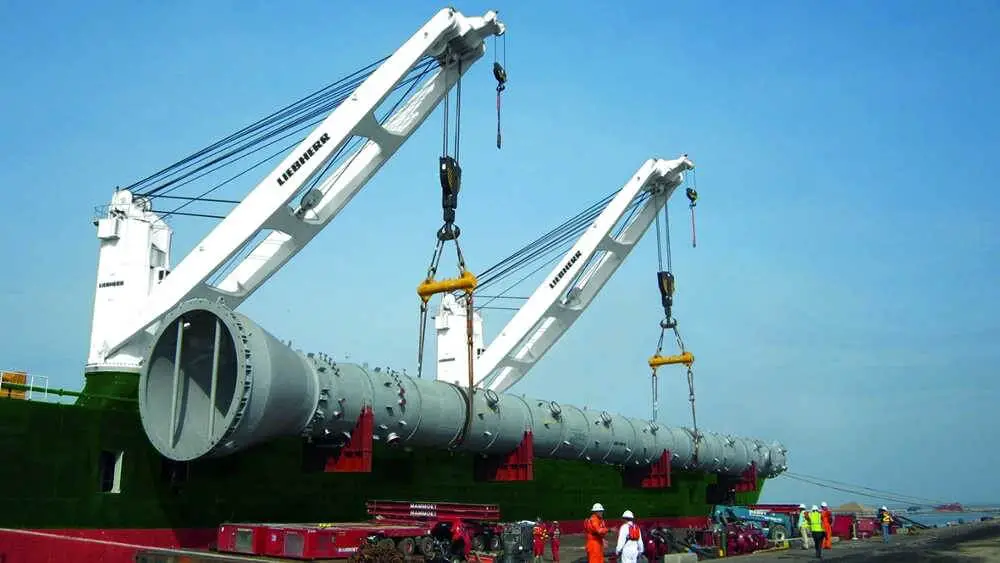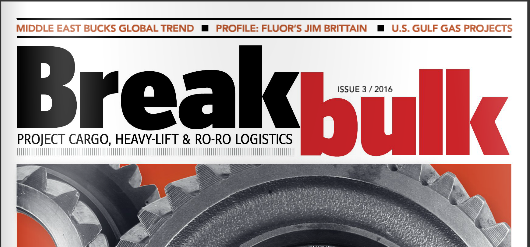
In the world of maritime operations, the stability of a vessel plays a crucial role in ensuring the safety of crew, cargo, and the ship itself. One significant factor that can affect a ship’s stability is the handling of heavy lifts. When a crane or derrick lifts a heavy load, the center of gravity (COG) of the vessel shifts, potentially causing instability and jeopardizing the ship’s seaworthiness. In this article, we will explore the implications of heavy lifts on a ship’s stability and the measures that mariners must take to ensure a safe and secure operation.
Understanding the COG and ‘G’ Movement
The COG of a ship refers to the point where the vessel’s total weight is assumed to be concentrated. When a heavy lift is hoisted by a crane or derrick, the COG of the load is considered to act from the head of that derrick or crane jib. This assumption is crucial for calculating the ship’s stability criteria, as it simulates loading a weight above the ship’s COG.
As a result of the weight being loaded on board the vessel, there is a movement of the ship’s ‘G,’ which refers to the metacentric height. This movement is directed towards the weight being loaded. When the weight is lifted, and it effectively acts from the head of the derrick, the ship’s ‘G’ moves upwards towards this point of action.
The outcome of this movement is a reduction in the ship’s GM value. GM, or metacentric height, is a measure of a ship’s initial stability. When GM decreases, the ship becomes less stable, making it more prone to rolling and potential instability.
Ensuring Stability during Heavy Lifts
To maintain stability during heavy lifts, it is essential to consider the movement of ‘G’ and take preventive measures. When a weight is taken by the ship’s derrick, the ‘G’ will rise towards the metacentre ‘M,’ and in some cases, it might even rise above ‘M,’ causing an unstable condition. Therefore, it is prudent to lower the position of ‘G’ beforehand, anticipating the rising ‘G’ prior to a heavy lift operation.
Increasing the GM before the lift takes place can be achieved by filling ballast tanks (DB tanks). By doing so, the angle of the heel can be reduced, promoting better stability during the lift.
Effect of Heavy Lifts on Seaworthiness
Heavy lift cargoes, when loaded on a vessel, can have a significant impact on its seaworthiness. It is crucial to ensure that the heavy lift is securely and properly fastened, adhering to the “Cargo Securing Manual” and the “Code for Safe Practice for Cargo Stowage and Securing.”
Failure to secure the heavy lift adequately can lead to cargo shifting during heavy weather conditions, potentially resulting in a severe list at sea and even causing the vessel to capsize. Moreover, the improper handling of heavy lifts can cause damage to the vessel’s structure, compromising its watertight integrity and leading to flooding or progressive flooding of the vessel.
Summarizing
The stability of a ship is of utmost importance to ensure the safety and well-being of everyone on board and to safeguard the cargo and the vessel itself. Heavy lifts can significantly influence a ship’s stability, and mariners must be vigilant and take appropriate actions to mitigate potential risks. By understanding the impact of heavy lifts on the ship’s COG and ‘G’ movement, and by following proper securing procedures, the adverse effects of heavy lifts on the ship’s seaworthiness can be minimized.





